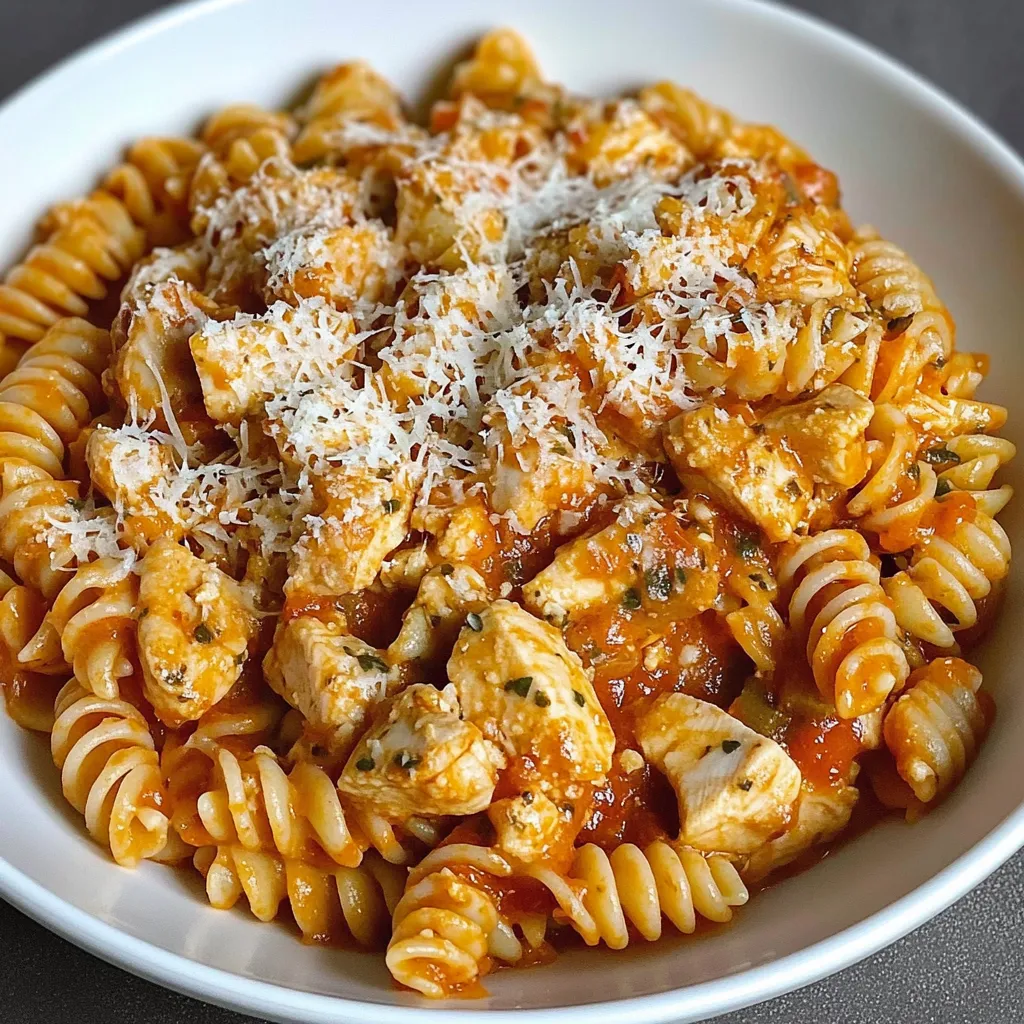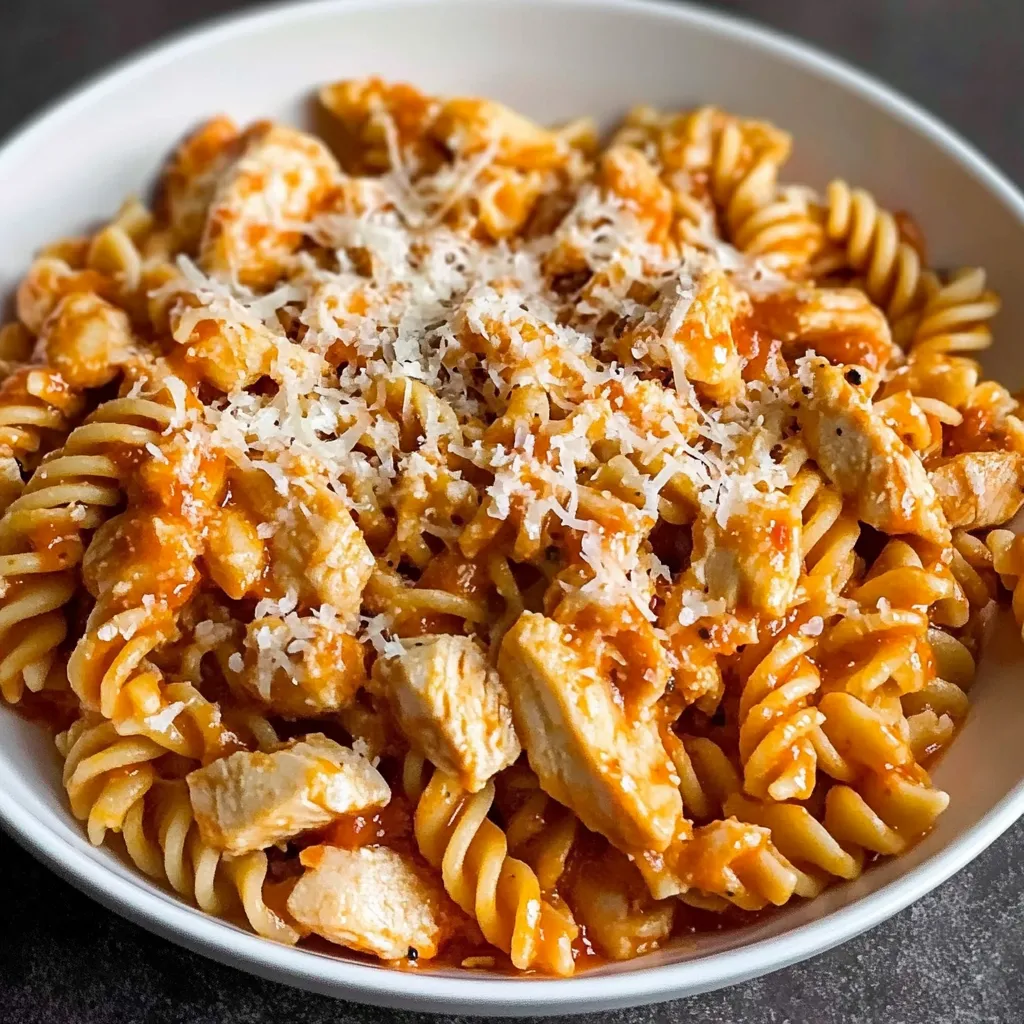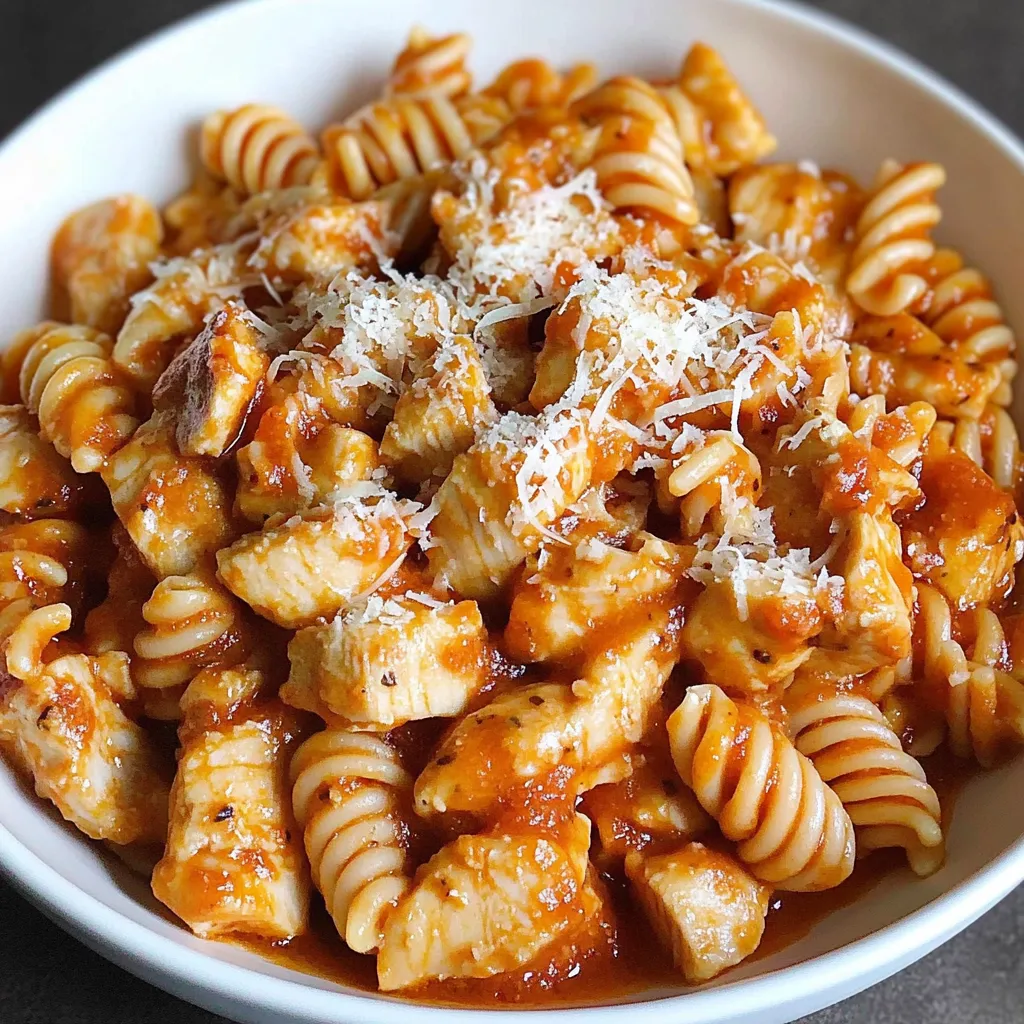 Pin it
Pin it
The sizzle of seasoned chicken hitting a hot skillet fills my kitchen with an irresistible aroma of garlic and parmesan. After countless attempts to create a pasta dish that satisfies cravings without compromising nutrition goals, this recipe emerged as my perfect solution. What makes it special isn't just the crispy exterior and juicy interior of the chicken, but how it transforms simple ingredients into a protein-packed meal that tastes indulgent while supporting fitness goals. The garlicky, cheesy coating creates such rich flavor that no one believes me when I reveal the impressive macros – proving that healthy eating doesn't require sacrifice.
My family never believes me when I tell them this dish has only 6 grams of carbs per serving. The garlic parmesan coating creates such rich flavor, they're convinced it must be less healthy than it is. Even my gym buddies were skeptical until I shared the nutrition breakdown!
Essential Elements
- Chicken Tenderloins: Uniform pieces ensure even cooking
- Fresh Garlic: Creates deeper flavor than pre-minced versions
- Real Parmesan: Freshly grated provides better coating and melting
- Quick-Cook Pasta: Saves time without sacrificing texture
- Simple Tomato Sauce: Creates the base for our lighter sauce
- Carefully Selected Seasonings: Maximum flavor with minimum ingredients
Creating Pasta Magic
This recipe brilliantly reimagines traditional chicken pasta by prioritizing protein while keeping carbs surprisingly low. The magic happens in the seasoning mixture that creates a flavorful crust on the chicken while keeping the inside perfectly juicy. This technique, combined with clever sauce preparation, transforms a typically heavy dish into something that supports nutrition goals without sacrificing satisfaction.
- Master the Marinade:
- Combine seasonings thoroughly for even distribution
- Coat chicken pieces completely with mixture
- Allow at least 10 minutes for flavors to penetrate
- Don't discard excess seasoning – it flavors the sauce
- Perfect the Protein:
- Heat pan properly before adding chicken
- Place pieces with space between them to prevent steaming
- Resist moving chicken until crust forms
- Check internal temperature for perfect doneness
- Create the Sauce:
- Build flavors in the same pan used for chicken
- Incorporate chicken fond (browned bits) from pan bottom
- Balance seasonings carefully with the tomato base
- Reduce slightly for perfect consistency
- Combine with Precision:
- Add pre-cooked pasta directly to the sauce
- Toss gently to coat each piece evenly
- Return chicken to the pan for final heating
- Allow flavors to meld briefly before serving
 Pin it
Pin it
Kitchen Equipment Essentials
Creating this healthy chicken pasta requires minimal equipment, making it perfect for any kitchen setup.
- Large skillet: A 12-inch pan provides enough surface area for proper browning
- Sharp knife: Essential for cutting chicken into uniform pieces
- Microplane grater: Creates finely grated parmesan that adheres better
- Meat thermometer: Takes the guesswork out of chicken doneness
I prefer a cast-iron or heavy stainless steel skillet for this recipe, as they maintain consistent heat and develop better fond for the sauce. A silicone-tipped tongs gives perfect control when turning chicken pieces without scratching your pan. While not essential, a splatter guard keeps your stovetop cleaner when cooking the chicken at higher temperatures. For meal prep purposes, glass containers with dividers keep portions perfectly portioned and ready to grab.
Make It Your Own
This versatile recipe welcomes creative modifications while maintaining its impressive nutrition profile.
For even higher protein:
- Swap rotini for lentil or chickpea pasta
- Add a sprinkle of nutritional yeast to the coating
- Include Greek yogurt in the sauce for creaminess
Vegetable additions that work beautifully:
- Sautéed mushrooms added right after cooking chicken
- Fresh spinach wilted in at the final moment
- Cherry tomatoes that burst in the hot pan
- Diced bell peppers for color and crunch
The seasoning blend also adapts well to your preferences. For Italian flair, add dried oregano and basil to the coating. Create a spicier version with additional red pepper flakes or cayenne. Those watching sodium can reduce the parmesan and add nutritional yeast instead. I've even created a Mediterranean version by adding lemon zest and dried herbs to the chicken coating before cooking.
Storage Solutions
This protein-packed pasta keeps exceptionally well, making it perfect for meal prep. Store cooled leftovers in airtight containers in the refrigerator for up to three days. When reheating, add a splash of water or chicken broth to revive the sauce, as the pasta will continue absorbing liquid. For best results, reheat in a hot skillet rather than microwave to maintain the chicken's texture. The flavors actually develop nicely overnight, making day-two servings sometimes even better than the original. For longer storage, you can freeze portions for up to one month – simply thaw overnight in the refrigerator before reheating.
Perfect Pairings
This balanced dish works beautifully alongside simple vegetable sides that complete the meal. Roasted broccoli develops crispy edges that catch the sauce beautifully, while providing additional fiber and nutrients. A simple arugula salad dressed with lemon juice and olive oil adds peppery freshness that balances the richness of the chicken and sauce. For a complete fitness-focused meal, add a side of roasted asparagus dressed with a touch more parmesan. When entertaining, serve with a light tomato-cucumber salad dressed with red wine vinegar and herbs for a Mediterranean-inspired spread that maintains the healthy profile.
Troubleshooting Tips
If your chicken turns out tough, you've likely overcooked it – use a meat thermometer to remove it from heat precisely at 165°F. For chicken that won't develop a good crust, your pan probably wasn't hot enough before adding it – wait until the pan is properly heated and don't overcrowd the pieces. Should your sauce become too thick, add small amounts of chicken broth or water until reaching desired consistency. If the parmesan coating burns before chicken is cooked through, your heat is too high – next time, lower temperature slightly after initial searing. Remember that different pasta varieties absorb sauce differently, so adjust liquid accordingly when substituting.
My fitness coach, who first introduced me to macro-counting, couldn't believe this recipe's nutrition profile when I shared it at our gym potluck. "This is what healthy eating should be," she said between bites, "satisfying enough that you don't feel like you're missing out." Her wisdom about sustainable nutrition has shaped how I develop recipes – finding that perfect balance between enjoyment and nourishment that makes healthy eating a lifestyle rather than a burden.
 Pin it
Pin it
Conclusion
Garlic Parmesan Healthy Chicken Pasta represents the perfect marriage of flavor and nutrition in home cooking. It proves that health-conscious meals don't require bland ingredients or complicated techniques – just thoughtful preparation and quality components. Whether you're tracking macros, looking for post-workout fuel, or simply wanting a satisfying meal that doesn't derail your goals, this recipe delivers on all fronts. The combination of protein-rich chicken, clever seasoning, and mindful sauce creation results in a dish that satisfies on every level. As you master this technique, you'll find yourself returning to it again and again as a foundation for healthy, flavorful meals that support your wellness journey.
Frequently Asked Questions
- → Can I use chicken thighs instead of chicken breast?
- Absolutely! Boneless, skinless chicken thighs work great and often stay more tender. Just cut them into similar-sized pieces and cook for 1-2 minutes longer.
- → What is garlic pepper seasoning and where can I find it?
- Garlic pepper seasoning is a blend of garlic, black pepper, and sometimes other herbs. It's available in the spice section of most grocery stores. If you can't find it, mix equal parts garlic powder and black pepper with a pinch of salt.
- → Can I make this ahead of time?
- Yes! You can marinate the chicken up to 24 hours ahead. The completed dish keeps well in the refrigerator for 3-4 days. Add a splash of water when reheating to prevent it from drying out.
- → How can I make this dish healthier?
- Use whole wheat pasta for more fiber, add vegetables like spinach, bell peppers, or zucchini during the final cooking stage, and skip the sweetener in the sauce if you prefer.
- → Is there a way to make this dairy-free?
- Yes, replace the parmesan with nutritional yeast for a similar cheesy flavor without dairy. Use 1-2 tablespoons in the marinade, and you can sprinkle more on top before serving.
